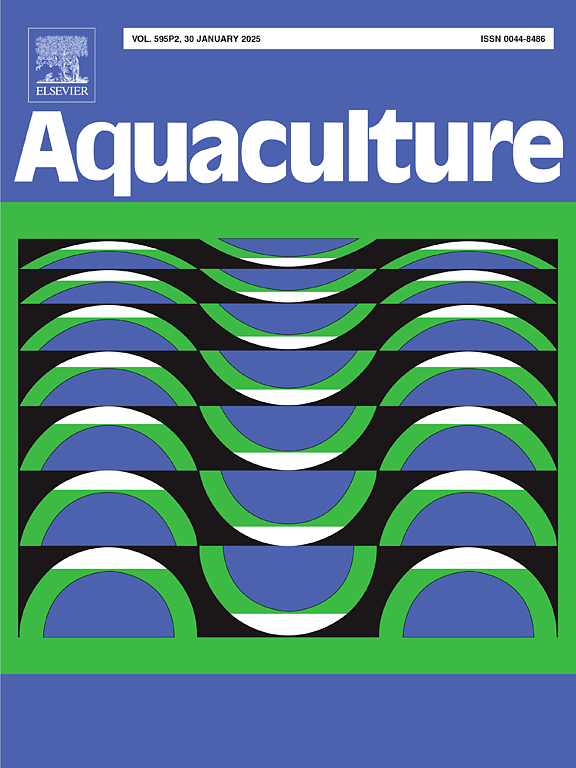Transcriptomics-driven lipidomics reveal the hepatic nutrition and lipid metabolism during ovarian development of Conger myriaster
IF 3.9
1区 农林科学
Q1 FISHERIES
引用次数: 0
Abstract
Nutrient and energy metabolism are crucial prerequisites for sexual maturation of eels. However, studies on the mechanisms of nutrient and energy metabolism in the liver during ovarian maturation in female Conger myriaster are limited, hindering successful artificial breeding. This study conducted transcriptomic and lipidomics sequencing on liver tissues from different stages of ovarian development (I, IV, VIII) to explore important nutritional regulatory and energy mobilization factors and pathways. We observed that the activities of fatty acid synthase, hepatic lipase, and lipoprotein lipase increased with developmental stages, while the activities of aspartate transaminase and total protein decreased. Functional annotation indicated that 2731 differentially expressed genes (DEGs) in stage IV vs stage VIII were associated with processes such as steroid hormone biosynthesis, steroid biosynthesis, linoleic acid metabolism, fat digestion and absorption, and vitamin digestion and absorption. Lipidomics analysis (67 differential lipid metabolites) revealed that energy redistribution in the liver during gonadal development was primarily regulated through glycerophospholipid metabolism, linoleic acid metabolism, and GPI biosynthesis pathways, which were responsible for the catabolism of stored energy reserves. Additionally, we identified several key metabolites and genes involved in the metabolism of phospholipids, glycerolipids, amino acids, and vitamins, contributing to the assembly and transport of essential nutrients in the liver. This study provided new insights into energy utilization during ovarian development in C. myriaster and offered critical information for optimizing nutritional strategies in artificial breeding.
求助全文
约1分钟内获得全文
求助全文
来源期刊

Aquaculture
农林科学-海洋与淡水生物学
CiteScore
8.60
自引率
17.80%
发文量
1246
审稿时长
56 days
期刊介绍:
Aquaculture is an international journal for the exploration, improvement and management of all freshwater and marine food resources. It publishes novel and innovative research of world-wide interest on farming of aquatic organisms, which includes finfish, mollusks, crustaceans and aquatic plants for human consumption. Research on ornamentals is not a focus of the Journal. Aquaculture only publishes papers with a clear relevance to improving aquaculture practices or a potential application.
 求助内容:
求助内容: 应助结果提醒方式:
应助结果提醒方式:


